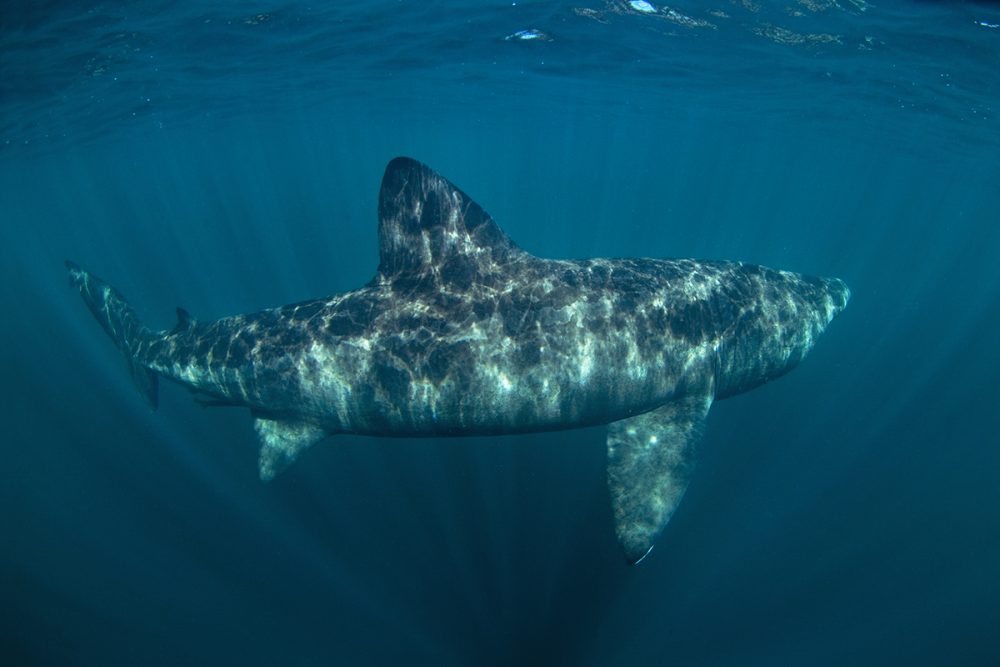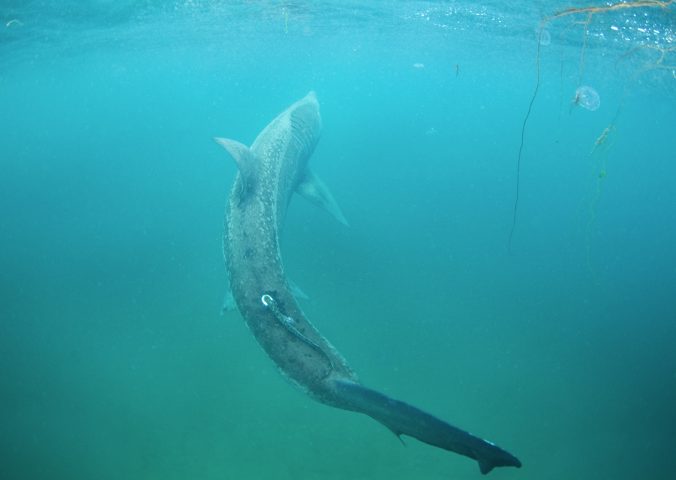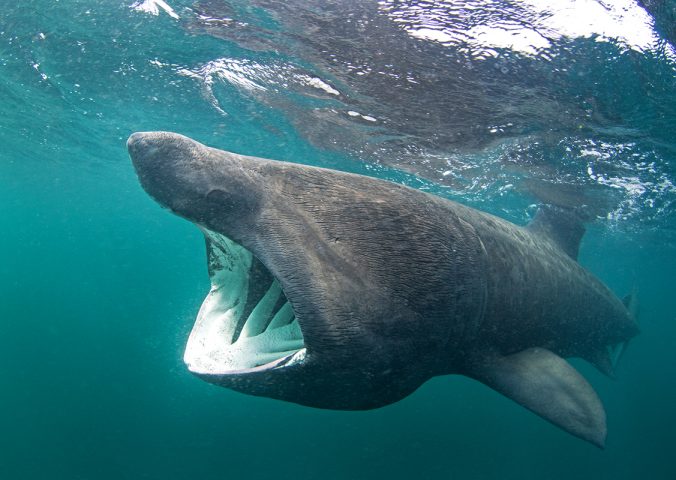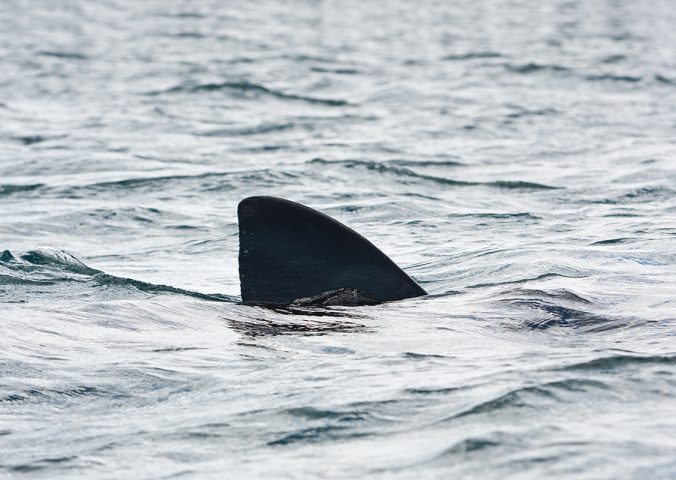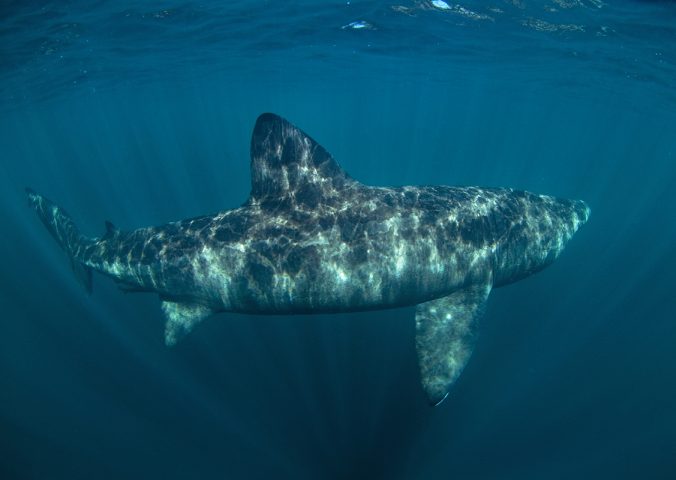About
The basking shark is the second biggest fish in the sea, after the whale shark. It is the only extant species in the family Cetorhinidae. As an enormous filter feeding species it can be encountered swimming slowly or “basking” near the surface whilst ram-feeding on plankton in cold, coastal waters.
A charismatic and harmless species, the basking shark is renowned for feeding with its huge mouth opened wide, filtering plankton across its elongated gill slits. Modified “gill rakers” assist in capturing small organisms including copepods, barnacles, larvae and fish eggs. This species can filter up to 2,000 tons of water per hour (nearly an entire olympic swimming pool!). Very little is known about the basking shark biology. The only female caught gave birth to 6 pups and it is generally thought that they reproduce through aplacental viviparity – where embryos develop inside eggs retained within the mothers body until they are ready to hatch, and the mother gives birth to live young.
Historically, the basking shark was hunted for its liver oil, used to make vitamin A, lamp oil and tanning leather. The oil also contains squalene, used in medicine and the cosmetic industry. Basking sharks were also hunted for their huge fins, which are desirable in the Asian shark fin market. Now however, this species is protected across much of its range and was added to the UK’s Wildlife and Countryside Act in 1999, giving this species complete protection in British waters. The basking shark is also fully protected in the US and the EU, and is partially protected in New Zealand, where targeted fishing is illegal but may be landed as bycatch.
- Order: Lamniformes
- Family: Cetorhinidae
- Population: Unknown
- Trend: decreasing
- Size: Up to 10m (?)
EDGE Score
Distribution
This species has a global distribution from the Atlantic and Pacific Oceans to the Mediterranean Sea. Basking sharks a found nearer the surface in temperate waters and below the thermocline in tropical and equatorial regions.
Habitat and Ecology
This species spends most of its time at the surface, but there are records of basking sharks at depths as deep as 1200m! It regularly visits inshore habitats including headlands, islands and bays and can be spotted from land where zooplankton flourish.
